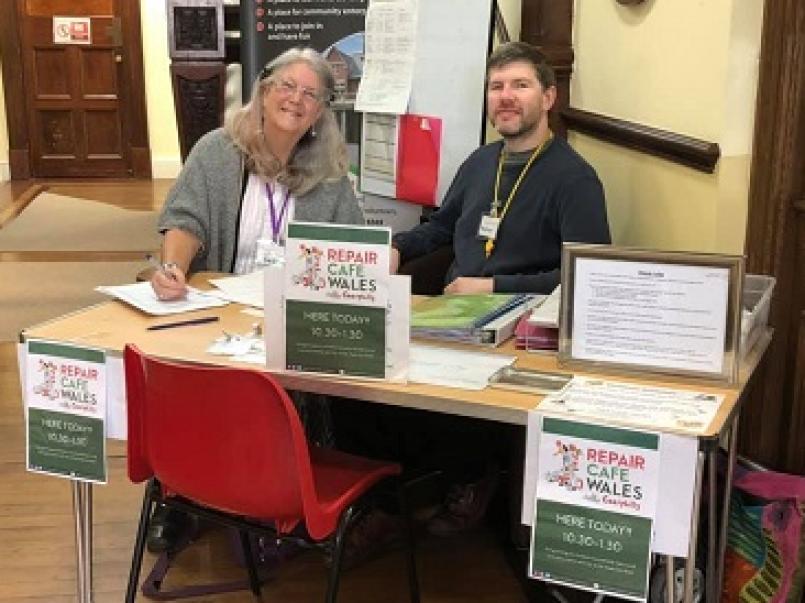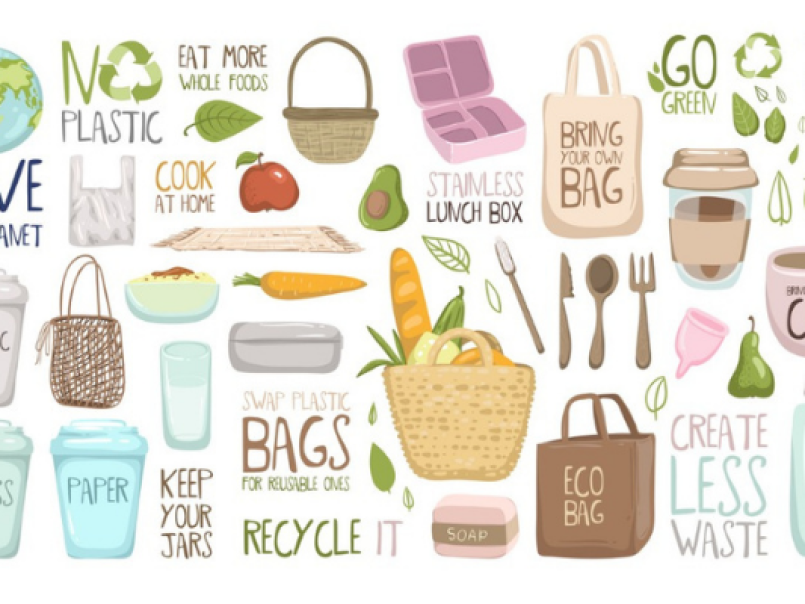Clothes, how bad can they be…right?
Published: 28 Jun 2019
I am writing this the day before World Environment Day 2019, at a time when the need for a sustainable and transparent fashion industry has never been greater. It takes me back to over 15 years ago when I first heard the term “Sustainable Fashion”. But what did it really mean? Was it just a new buzzword for clothing that was expensive and made more ethically? And the fashion student in me thought: “Urgh, why does it all look beige?” Was it really that important? They’re just clothes after all. How bad can they be…Right?
"Buying cheap clothes is a short-term fix"
Back in 2005 I set myself the challenge of not buying any new clothes for at least 3 months. I undertook this challenge as research for my dissertation after reading about modern consumers losing their emotional connection with clothing, like had been the case for hundreds of years previously. I refused to buy from high street stores, only from charity shops, customising and making items myself from these trash treasures! My aim was to use the money I would have spent on cheap fashion, on organic or Fair Trade clothes after the 3 months. I had no idea how much it would change the way I look at fashion forever. I soon realised that buying cheap clothes was a short-term fix for our emotional and psychological needs. I started to discover the newfound emotional connection I had to the clothes I was creating or customising, and of course those expensive items I had to save up for. I soon learned that fashion should not be the cheap and disposable commodity that we know as “fast fashion”. I also started to ask myself “If I’m not paying a decent price for my clothes…who is?”
"We rarely feel connected to our clothes and often discard them"
The fashion industry affects us all and connects us globally through the clothes we wear. However, so many of us have little regard for the environments in which these garments are processed and manufactured. Recent reports such as Stacey Dooley Investigates and The Environmental Audit Committee’s Fixing Fashion, suggest the fashion industry is one of the biggest polluters on the planet. This is largely because we rarely feel connected to our clothes and we often discard them without hesitation. This shows little regard for the people and processes involved in making them, therefore ignoring the whole life cycle of our garments.
The fashion industry has three main stages to its cycle:
Production. Use. End of life.
PRODUCTION
Approximately 90 million tons of textiles are produced each year, of which 60% is synthetic oil-based material such as polyester. Polyester has double the Co2 emissions of natural fabrics and depends on finite resources.
Based on these facts it’s already pretty worrying and we haven’t even began to scratch the surface…
The production stage alone has a huge environmental and social footprint and can be broken down into three main areas: Water, Air and Waste.
Water is one of the main environmental issues in the fashion industry, due to the amount used to grow crops and finish products, to the effluent released from dyeing and finishing. This effluent pollutes rivers and lakes with heavy metals and carcinogens, damaging wildlife and impacting on local communities. It can take up to 20,000 litres of water to produce just one cotton t-shirt. And considering cotton products are grown and produced in arid areas with limited access to clean water, this is a huge cause for concern.
Another key issue is air pollution. This covers not only the Co2 emissions of transportation of goods around the globe, but also local pollution and exposure to chemicals such as sulphur, chlorine and volatile organic compounds. In fact, the World Health Organisation and Pesticide Action Network estimate that 15,000 pesticide related deaths occur each year just from growing cotton, a fibre that is often regarded as clean and natural, but in reality is an ugly, all you can eat buffet for bugs.
Waste is another huge source of pollution. This covers everything from fabric scraps leftover at the factories to water discharges and chemical containers. And unfortunately the areas in which our clothes are produced means there is limited legislation to ensure these items are recycled or disposed of correctly.
USE
We often don’t think about this stage but it is one of the most damaging and polluting of all. This depends largely on where you live or how often you wash your clothes etc. For example, in the West we tend to wash our clothes after 1 wear, this uses a lot of water, energy and chemicals in the detergents. Think about that for minute, washing each item of clothing for the rest of your life! That’s a lot of waste! Another more recent concern due to the increase in polyester clothing is microfibers, which are released into our water systems with each wash. These microscopic plastic particles kill wildlife and have even found their way into our food! Yuk!
END OF LIFE
This stage has some quite appalling statistics. The fashion industry as a whole throws away 1 million tons of textile waste each year! While consumers throwaway 300,000 tons of clothing per year, 95% of which is not recycled, but thrown in the bin ending up in incinerators or landfill. This creates pollution such as methane gas being released into the atmosphere. This is shocking because the majority of those discarded textiles can, and should be, recycled and we all know how long plastic stays around, it’s the same for polyester clothing.
So, this all sounds pretty awful, right? But what can we do about it?
KNOWLEDGE IS POWER
First of all, we need to become informed and ethical citizens. We need to understand and take responsibility for how our clothes are made, and also connect to those who make them and the land in which they pollute. This could allow us to reduce consumption and demand. A good start is to read the Fixing Fashion report by the Environmental Audit Committee. The website has a short video, an overview and a full report if you want to know more.
Another idea is to only buy clothes that have limited impact and use a very small growing space such as hemp and bamboo (only closed loop bamboo as it uses less chemicals) or select items using organic cotton and recycled materials.
You could also write to your favourite companies and ask about the processes used in making their clothes, such as their environmental and social impacts. You may not hear anything back but if enough people ask they will have to respond eventually, and who knows they may even change their practices.
I also 100% recommend that everyone undertakes a challenge like I did all those years ago, just Google “second hand clothing challenge” and over 124 million results will come up! Get inspired!
RECYCLE
According to WRAP the UK has £30billion worth of unworn clothing stored in our wardrobes. And 75% of our used clothes haven’t been worn in over a year. So why not give it to someone who will! Either take to a charity shop or organise your own swishing party! And remember, even torn and soiled clothes can be recycled into industrial rags and charity shops make money from them, just please do not put them in the bin!
CREATE
Join a sewing club, workshop or course. There are so many all over Wales which teach us how to not only create new items ourselves but also to repair and maintain those we already have. This brings me back to that emotional connection... If we take time to create or look after something we will be far less likely to throw it away. And trust me, making and wearing something you created yourself that is totally unique, feels much better than any shopping spree!
FIND OUT MORE
Visit SustFashWales to learn more about sustainable fashion here in Wales. Find out about all the many designers, companies, education establishments and craftivists that are working to provide sustainable solutions to fashion. SustFashWales is currently working on an upcoming database directory of everything fashion and sustainable in Wales making it easier to be part of the global campaign.
As consumers we often have no idea how much power we have to make a difference in such a huge perplexing global economy. By doing little things like learning where your clothes and accessories come from, who makes them and then using this to make more responsible choices, we have the ability to make great change!
Join us!
Written by Helen O’Sullivan - 5th June 2019
Links:
EAC Fixing Fashion:
https://publications.parliament.uk/pa/cm201719/cmselect/cmenvaud/1952/report-summary.html
EAC Fixing Fashion Full Report:
https://publications.parliament.uk/pa/cm201719/cmselect/cmenvaud/1952/1952.pdf
WRAP CYMRU:
Photo credit: Michelangelo Pistoletto, Venus of the Rags, 1967 via AnNother Magazine



